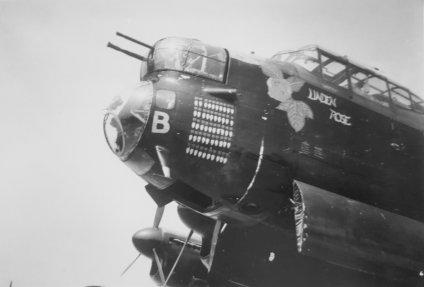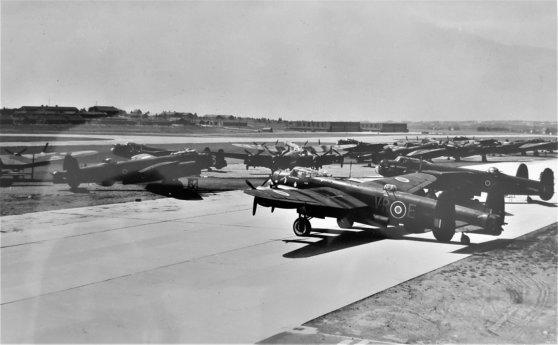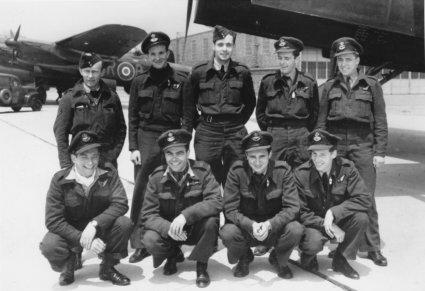Wartime Heritage
ASSOCIATION


copyright © Wartime Heritage Association
Website hosting courtesy of Register.com - a web.com company
The Pacific War Ends
August 14, 1945
On August 6, 1945, the first atomic bomb was dropped on Hiroshima, Japan, a city of over 100,000 people. A third of the city
was destroyed, the rest lay in ruins. Three days later, a second bomb totally destroyed the port of Nagasaki. The Japanese government
sued for peace on the following day and, on August 14, 1945, Japan accepted the Allied terms of unconditional surrender.
With victory in Europe secured, the Allied leaders had prepared for the final struggle in the Pacific. Nearly 80,000 Canadians
volunteered to join the Pacific forces and began concentrating at nine stations across Canada in July 1945. Canadian naval
participation was to provide sixty ships, manned by 13,500 men. However, the war was over before this help was needed.
Preparing for the Pacific Force - Yarmouth NS
After East Camp was closed on March 30,
1945 and West Camp was winding down,
Yarmouth was the home of a training squadron
of operational Lancaster Bomber aircraft. The
first unit of this group flew into Yarmouth in
June of 1945 with Lancaster B Mk X’s which they
had ferried from England. They were to be part
of 661 Heavy Bomber Wing of Tiger Force, for
Pacific operations and were designated #6
(RCAF) Group. Crews immediately took a
month leave. Personnel began returning from
leave at the end of July, but their units were
still being reorganized. Station Yarmouth was
still furnishing the quarters of the force in early
August, and the training that commenced on
August 8 consisted of preliminary lectures but
there was still no flying practice.
Crews were to train at several Maritime locations on Lancaster X’s which had been on operations in England a short time before.
The Group was to have been operational on Lincolns, a sleek version of the Lancaster, in the Pacific by December, 1945. However the
dropping of the Atom bombs on Hiroshima and Nagasaki and the cessation of hostilities with Japan negated the use of the plan and
Tiger Force Yarmouth was disbanded on September 5, 1945
Yarmouth NS and Victory in Japan - August 14-15 1945
For the Town of Yarmouth in Nova Scotia the “big JV Day” was on Wednesday. August 15th. Peace was declared during the evening of
Tuesday, August 14. Mae Brown wrote in her diary “We had been looking for that announcement ever since Sunday night, everyone
just glued to their radios”. On Tuesday night she had received a call from a women suggesting police protection would be needed for
the Red Triangle Canteen at the YMCA. “I fairly insulted her, so I was happy the boys behaved so beautifully. A lot of them were
drunk but so respectful it was pitiful. I even got my share of victory kisses. The people of Yarmouth celebrated in a small way.” But
at the Red Triangle Canteen Mae Brown conducted more drunk lads up and down the stairs all day long. “Only once did I verge onto
real trouble. He was a returned man who was crawling up the stairs, he resented being seen, so he took hold of me and said, ‘I don’t
like you or anything about you’. I said, I’m so sorry. I feel bad when the boys do not like me, but I like you. He said, ‘Is that so, well
perhaps you’re not so bad. Take my arm and we will parade before everyone.’ I did, so that disaster was averted.” The older
woman taking cash in the canteen that night encountered one of the older men who said to her, “I wish I had married you. I can see
your head on my pillow now, you old battle axe!. That women would tell the story many time later.
The red Triangle Canteen would continue operating until November 16, 1945. The Red Triangle Canteen had its official closing on that
evening. “About two hundred and twenty-five Yarmouth ladies would be present. Some twenty have faithfully served the
servicemen for the five years that the Canteen has been functioning. Hundreds of thousands of men for all parts of the world had
sought the hospitality offered at the Red Triangle Club …” (Mae Brown)


Lancasters from 419 and 428 Squadron at Yarmouth, NS after returning from Europe.
Nova Scotia Casualties in the Far East and Pacific Campaigns
109 with connection to Nova Scotia would make the ultimate sacrifice serving in the Far East and the Pacific Campaign. They are
remembered on Memorials and in Cemeteries in Hong Kong, Burma (Myanmar), Japan, Australia, Philippines, Singapore, Hawaii, Sri
Lanka, India, Bangladesh, and the United States. List of Casualties

Peter Wiens (back row on right) and crew members in Yarmouth, NS after
flying from Middleton-St-George, England


- World War I - Menu
- WWI Stories and Articles
- Photos - Yarmouth Soldiers
- Selection of World War I Songs
- WWI Casualties of Yarmouth, NS
- Those Who Served - Yarmouth, NS
- WWI Casualties Digby Co. NS
- WWI Casualties Shelburne Co. NS
- Merchant Mariners (1915) Yarmouth, NS
- Canadian Forestry Corps - Non Yarmouth Birth/Residence Enlistments
- US Draft Registry - Yarmouth NS Born


- World War II - Menu
- WWII Stories and Articles
- Telegraphist Air Gunners
- WWII Casualties of Nova Scotia
- US Casualties with NS Connection
- Far East/Pacific Casualties with NS Connection
- Merchant Navy Casualties Nova Scotia
- Nova Scotia WWII Casualties Holten Canadian War Cemetery
- D-Day Casualties - Nova Scotia
- CANLOAN Program Casualties - Nova Scotia
- Battle of the Bulge Casualties - Nova Scotia
- WWII Casualties Yarmouth NS
- Yarmouth Casualties - RCAF RAF Canadian Army WWII
- Yarmouth Co., Marrages WWII
- Casualties Non-Born/Residents with Connection to Yarmouth Co., Nova Scotia.
- WWII Casualties Digby Co., NS
- Non-Nova Scotian WWII Casualties Buried in Nova Scotia
- WWII RCAF Casualties Aged 16-18
- Brothers/Sisters Who Served - World War II













